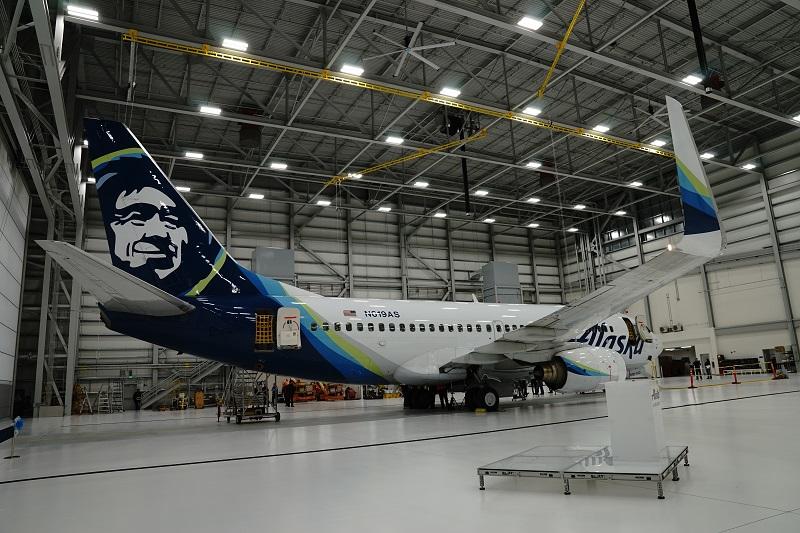Alaska Airlines Uses COVID-19 Downtime to Improve MRO Programs

Additional downtime from grounded fleets during the COVID-19 pandemic has given Alaska Airlines a chance to expand and improve its maintenance programs.
During a panel at Aviation Week Network’s MRO TransAtlantic virtual event on Oct. 28, Constance von Muehlen, Alaska’s SVP maintenance and engineering, says the company is embracing the experience as a silver lining.
Earlier this year, the airline had to park 155 of its aircraft and add a maintenance program to support the grounded fleet. “We didn’t really have an active parking program or, in fact, a long term parking program, and we did a lot of work with both Boeing and Airbus to improve those programs and incorporate them into our work—which meant we’ve added the four maintenance programs to the two existing programs we had before,” said von Muehlen.
The additional downtime has enabled Alaska to clear open deferrals and perform technician training. “We’ve also actually completed our integration with Boeing and Airbus now being on the same processes, the same systems, the same workforce with regards to integrating the Airbus fleet that we acquired from Virgin America a few years back,” noted von Muehlen. “So that’s all kind of silver lining, but it also really improved our stance in maintenance relative to where we may have been in the past.”
The acquired Airbus fleet has been an area of speculation in the industry, with some wondering whether Alaska plans to retain a mix of both Airbus and Boeing aircraft. According to von Muehlen, Alaska has 42 Airbus leases expiring between now and 2023, “so that puts us in a good position if we want to renew our fleet.” She clarified that these aircraft will be lease returned, “but on the other hand we’re actively looking to replace those airplanes shell-by-shell as we go forward.”
She adds that other Airbus aircraft are contracted to be returned in 2024 and 2025 and that Alaska will continue to fly a mixed fleet, since it has 10 A321s on lease with the latest currently contracted return date in 2031.
As traffic has picked back up, the airline now only has approximately 75 aircraft still parked. “As we look forward and we pull airplanes out of parking, [there is] lots of deferred maintenance that we’re accomplishing there, so new control processes and oversight processes that we put in place to make sure we do that safely and compliantly,” von Muehlen noted.
While maintenance work has slowed during the pandemic, von Muehlen said Alaska never stopped its heavy maintenance or relationships with component and engine suppliers. “Obviously that work has slowed down, but we thought it important to continue the work so that our strategic partners continue with their skilled workforce and have them available as we ramp back up—which is really what we’re doing now all the way into next summer, where we plan to fly a large majority of our airplanes and have those return to service,” said von Muehlen. She added that deferred maintenance, such as Alaska’s long-term parking and storage program, has built up over time, which bodes well for demand in the MRO ecosystem moving forward.
Additionally, von Muehlen noted that Alaska’s plans to join the Oneworld Alliance next year will mean more opportunities to collaborate with international maintenance partners.
While it may be some time before most international flight traffic returns, von Muehlen said Alaska has been working with local governments and infectious disease specialists to facilitate ease and safety of travel. For instance, it has been collaborating with local authorities in Hawaii to establish safety protocols that meet its unique testing and quarantine requirements and adding “100 layers of safety” through various procedures, processes and initiatives.
It plans to block middle seats on aircraft through the rest of this year and has been working to establish cleaning processes that are both effective and efficient. One potential option von Muehlen said Alaska might consider in the future is cabin ionization technology, which deactivates pathogens in the air through the generation of charged ions.


